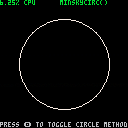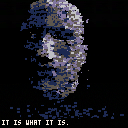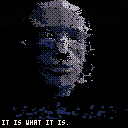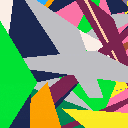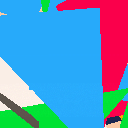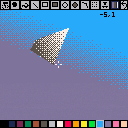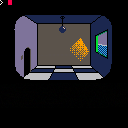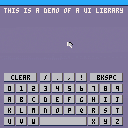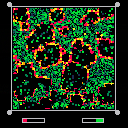Two ships enter. One ship sinks!
CONTROLS
[1P] [2P]
Left + Right S + F : Steer Ship
Z Tab : Fire Left Broadside / Select
X Q : Fire Right Broadside / Back
Up + Down E + D : Navigate Menu |
ABOUT THE GAME
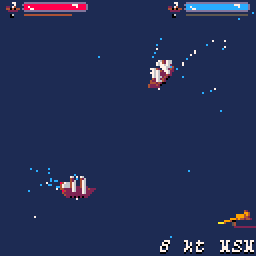
This is SINKING SHIPS, a one- or two-player fighting game about naval combat during the Napoleonic Wars, like Star Control meets Wooden Ships & Iron Men. Keep one eye on your enemy and the other on your wind-vane as you angle for the perfect position to unleash your broadside.



EDIT: updated demo to include huge optimizations contributed by Felice and ultrabrite in the thread below.
After reading this fascinating article about the Minsky Circle, I started experimenting with the algorithm in Pico-8. In the process, I stumbled upon a method for rasterizing circles that seems to be faster than the native circ() and circfill() functions at larger sizes, and also has a more pleasing look that minimizes low-resolution aliasing.
Demo attached in case anyone finds this useful. Press Z (or whatever key you've bound to button 1) to toggle between the Minsky Circle-based methods and the native Pico-8 draw functions.
--by @musurca and @Felice function minskycirc(x,y,r,c) x,y=x+0.5,y+0.5 local j,k,rat=r,0,1/r poke(0x5f25,c) --set color for i=1,0.785*r do k-=rat*j j+=rat*k pset(x+j,y+k) pset(x+j,y-k) pset(x-j,y+k) pset(x-j,y-k) pset(x+k,y+j) pset(x+k,y-j) pset(x-k,y+j) pset(x-k,y-j) end pset(x,y-r) pset(x,y+r) pset(x-r,y) pset(x+r,y) end -- @musurca, @Felice, and @ultrabrite function minskycircfill(x,y,r,c) x,y=x+0.5,y+0.5 local j,k,rat=r,0,1/r poke(0x5f25,c) --set color for i=1,r*0.786 do k-=rat*j j+=rat*k rectfill(x+j,y+k,x+j,y-k) rectfill(x-j,y+k,x-j,y-k) rectfill(x-k,y-j,x-k,y+j) rectfill(x+k,y-j,x+k,y+j) end rectfill(x,y-r,x,y+r) end |





EDIT: changed the rendering style and improved performance. Happy New Year from a surly talking head!
Spend a long night with an uncooperative subject.
(Just a quick sketch—thanks to electricgryphon for the RGB dither-plotter. Head by Videroboy.)
old version:

EDIT3: round 2 -- with updated algorithms, methodology, and results
EDIT2: added Catatafish's method -- we have a new champion!!
EDIT: added solar's method.
EatMoreCheese's thread about triangle rasterizers got me thinking about the different "trifill" methods that have been posted to the BBS—and so, in the spirit of the holiday season, I wrote a small profiler to pit them against each other in a brutal, winner-takes-all competition.
Methodology: I measure the time it takes for each routine to draw the same table of 300 randomly-generated triangles ten times over. Vertex extents are in the range [-50, 178].
CAVEATS: This is not an "apples-to-apples" comparison, or even apples-to-genetically-modified-oranges. For example, scgrn's method draws n-gons (not just triangles) and creamdog's method draws particularly chunky triangles. For personal edification only—no code-shaming intended!
Results:
Let me know if you'd like me to change your entry, or add others!
See round 1 here:










**UPDATE v0.21: click n' drag support, analog keyboard control, smaller template, and LOTS of bugfixes
A vector graphics authoring tool for your Pico8 demos, fonts, adventure games, etc. Draw an image, then save it as a highly compressed string which can be shared with other PiCAD users, or else displayed in your own cartridges without using any space in the spritesheet by including the PiCAD API.
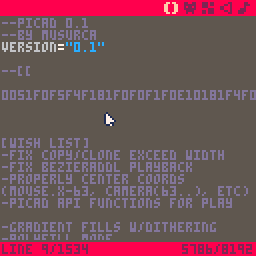
To use your PiCAD images in your own cartridges, start with this template API (click Show to see):






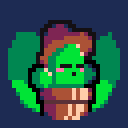
Pico-8 implementation of Scale2x and Scale3x. Original algorithms by Andrea Mazzoleni
Scale2x:
--[[
sind : sprite index
sz_x : x size
sz_y : y size
sx : screen pos x
sy : screen pos y
alpha: color to make transparent
]]--
function scale2x(sind,sz_x,sz_y,sx,sy,alpha)
alpha=alpha or 0
local offx=sind%16
local offy=flr(sind/16)
local soffx=offx*8
local soffy=offy*8
local sizex=sz_x-1
local sizey=sz_y-1
local a,b,c,d,e,f,g,h,i,
e0,e1,e2,e3,x0,y0
for y=0,sizey do
for x=0,sizex do
e=sget(soffx+x,soffy+y)
a=e
b=e
c=e
d=e
f=e
g=e
h=e
i=e
if y>0 then
b=sget(soffx+x,soffy+y-1)
end
if y<sizey then
h=sget(soffx+x,soffy+y+1)
end
if x>0 then
d=sget(soffx+x-1,soffy+y)
if y>0 then
a=sget(soffx+x-1,soffy+y-1)
end
if y<sizey then
g=sget(soffx+x-1,soffy+y+1)
end
end
if x<sizex then
f=sget(soffx+x+1,soffy+y)
if y>0 then
c=sget(soffx+x+1,soffy+y-1)
end
if y<sizey then
i=sget(soffx+x+1,soffy+y+1)
end
end
e0=e
e1=e
e2=e
e3=e
if b!=h and d!=f then
if(d==b) e0=d
if(b==f) e1=f
if(d==h) e2=d
if(h==f) e3=f
end
--draw
x0=sx+x*2
y0=sy+y*2
if(e0!=alpha) pset(x0, y0, e0)
if(e1!=alpha) pset(x0+1,y0, e1)
if(e2!=alpha) pset(x0, y0+1,e2)
if(e3!=alpha) pset(x0+1,y0+1,e3)
end
end
end
|
UPDATE: (0.2) Updated the mouse library so that the cursor can be driven by the gamepad OR the mouse at any time, to make the cart compatible with all Pico-8 devices.
I'm cobbling together a UI/mouse library for my own use, and thought it might be useful to others. For now the only widget is a button, but I wrote the API so that it's easy to modify and extend (in theory). Will provide more documentation if there's interest.
This would be a quick "hello world" with the library, for instance:
--button "onclick" callback function hideme(this) this.visible=false end function _init() --enable the mouse and --set the cursor to a 6x6 sprite --at index 0 mouse_init(0,6,6) --create a new parent UI and --make it the active one mainui = ui_make() ui_setactive(mainui) --make a button labeled "hello, world!" --which calls hideme() when clicked. --It will draw at screen position (30,30). --I could also optionally specify a width and height, --but if I leave it out the button will be sized automatically --based on the length of the label text. btn_make(mainui, "hello, world!", hideme, 30, 30) end function _update() --update mouse position and do event callbacks --as needed mouse_update() end function _draw() cls() --print mouse position print(mouse.x.." "..mouse.y,0,0,7) -- draw mouse on top of UI ui_draw() mouse_draw() end |
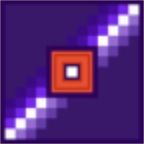




Wanted to throw something together for p8jam2, so did a spin on the forest-fire cellular automata.
Controls
Up/down: adjust probability of new fires
Left/right: adjust probability of tree growth
Button 1: reset probabilities
Button 1+2: reset map
(Warning: you could probably give yourself a seizure by cranking up the probabilities to the max.)
If you're not familiar with forest-fire, the rules are as follows:
1) A burning cell will become an empty cell
2) A tree will start to burn if at least one neighbor is burning
3) A tree ignites with probability f even if no neighbor is burning
4) An empty space fills with a tree with probability [i]p












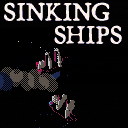
 4 comments
4 comments
